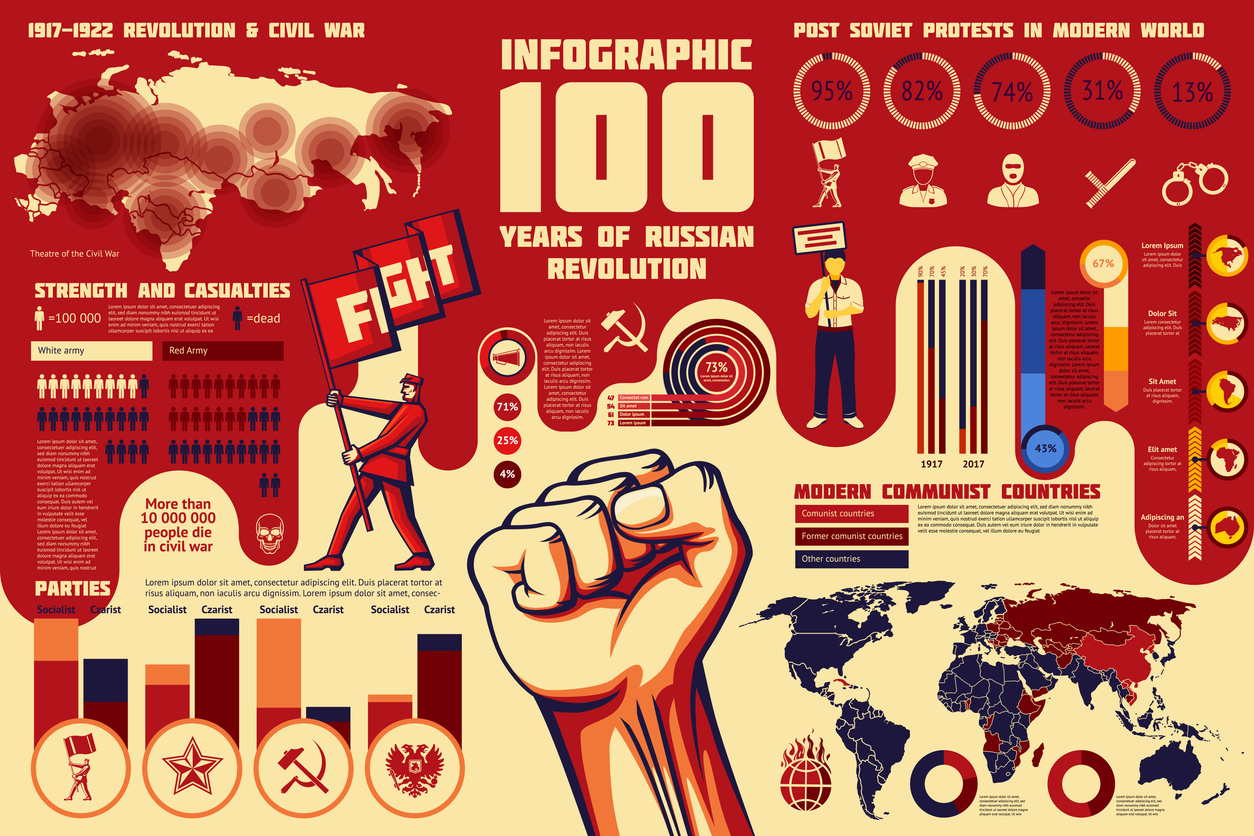
Revolutions: they change the world and they can create and destroy entire nations or societies. They are the source of so many changes throughout human history. Yes, I said human history.
Historical uprisings that lead to revolutions span the entire globe and span of human history, from the United States to France, Russia, Britain, Egypt, China, and so many more. There are so many historical revolutions that it is daunting and seemingly impossible to teach them all! And you would be right.
There are many social studies teachers that have to cover immense ground in so little time that they often end up teaching a more surface level explanation of revolutions instead of going in depth and giving them the time that they rightly deserve. I also understand that there are many students (and even some teachers) that wonder about the point of teaching historical revolutions. Why bother with them? Some of them happened thousands of years ago and, at first glance, are not seemingly applicable to today’s world. That could not be further from the truth. Revolutions are extremely important to teach. They impact our modern world in ways that we sometimes forget.
Revolution is the reason many nations exist
This is obvious to many astute educators and observers, but not always understood by all students. The obvious nation that would not exist without its revolution is the United States of America! The United States was originally just a set of 13 colonies of the British Empire before colonial founders banded together and made the decision to break free from the oppression of the British Government.
These Founding Fathers felt that their human rights were not considered, so they started a revolution. Inspired by the Americans, the French had their own revolution a handful of years after the United States as we know it was established. Although widely taught in social studies classrooms, these were not the only revolutions that took place over the past few centuries.
If teachers want to focus their curriculum on more recent events, the Russian Revolution is another example. Tired of the oppression and wanting to end Russia’s involvement in World War I, the Bolshevik Party, led by Vladimir Lenin, led a revolution against Czar Nicholas II. This revolution, for better or worse, created the Soviet Union, who would go on to be a major player in World War II and the Cold War. Additionally, the Haitian Revolution led to the creation of an independent Haiti, and there were several other revolutions in Latin America that led to the creation of nations such as Mexico, Cuba, Bolivia, and Nicaragua. These nations would not exist without a revolution and we cannot imagine our modern world without some of these nations existing. While it is important to teach revolutions to demonstrate how some nations came into existence, revolutions are also important to teach because they demonstrate one of the most constant forces of all time: change.
Revolutions bring about big change
Not all revolutions come in the form of establishing nations, as revolutions have brought change in already existing nations like Cuba and Russia. Rather, many historical uprisings were brought about as a result of a desire to change a part of society, whether it be economical, industrial, or political. The establishment of nations can be a marked change, but even something as simple as revolutionizing the inner workings of a government or economic system is a massive difference for society as a whole. Change can be scary, and many of the revolutions that have taken place over the last few centuries led to civilian bloodshed and death. Ultimately, these historical events required sacrifice, much like any change in life would, and for many revolutionaries, the violence in exchange for a free nation was a price they were willing to pay.

Revolutions are often started by regular people
A small detail that can often get away from the study of revolutions is that they were started by regular people in society who wanted things to change for the better. By focusing on the people who started revolutions, educators can teach students that they are capable of doing great things that can change the world for the better. Everyone wants there to be positive changes if they feel something needs to change. This desire for change in various revolutionaries led them to change the world. People from every socioeconomic class were able to become leaders and revolutionaries, and teachers can encourage students through this curriculum to become their own change-makers.
While teaching them this, educators also need to be mindful of the historical revolutions that led to disaster for their countries. When teaching about historical uprisings, remind students that citizens who wanted a better life started a movement that led to a revolution, which then led to great change. However, provide a comprehensive worldview of these events as well, and teach that sometimes revolutions lead to worse conditions for the society as a whole. Cuba and the Soviet Union come to mind there.
Students have the potential to take action and make changes for the better, a key standard that social studies aims to instill in students. Teaching about historical revolutions and giving these a comprehensive context in the classroom can ensure students improve their historical understandings and prepare them for college, career, and civic life.
Seeking more lessons to teach historical revolutions and reinforce key social studies concepts?
Sign up for a free 30-day trial of Active Classroom
Brendan King is a blog contributor for Social Studies School Service. He loves the study of history and reading any historical work he can get his hands on. More importantly, he is passionate about teaching history and social studies in fun and unique ways. He earned his B.A. in History at the University of West Georgia and currently teaches sixth-grade social studies. His hobbies include reading, playing video games, watching movies, and exercising.
